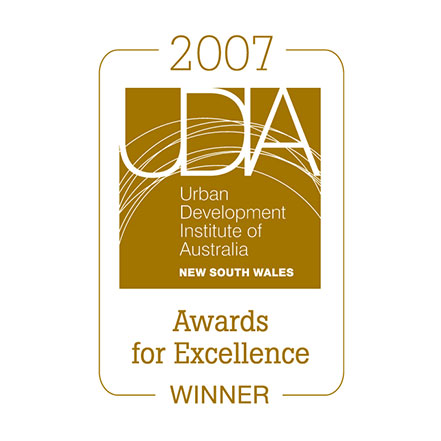Selecting an Architect
An Architect can help you improve the appearance, functionality and sustainability of your project; improve the efficiency of your lifestyle or business and deliver time and cost benefits. Consequently, making the right choice of Architect for your project is a very important decision.
With over 30 years’ experience working in both architectural consulting and property development, Lea Design Studio’s principal Architect John Lea has employed and managed numerous Architects during his career. This has provided him with unique insights having experienced firsthand the strengths and weaknesses of the profession from both the Architect’s and the Client’s perspective.
The following checklist provides you with some key points of inquiry to assist you in selecting the Architect that is best suited to your specific project.
1. EXPERIENCE.
Architecture is a highly skilled profession requiring 5-6 years of university study to gain a degree, two years of post-graduate work experience before sitting registration exams, and then many years of on the job practical experience learning the intricacies of how buildings are constructed cost effectively and efficiently. A common criticism of the profession comes from Builders who expect Architects to have the same level of knowledge as they do, without the equivalent benefit of practical first-hand on-site experience.
This relentless learning treadmill is exacerbated by the rapid advance in new building materials, technologies and construction techniques with associated changes to compliance legislation and regulation, all of which Architects need to be aware of.
Experience cannot be taught, it’s a function of time, so the longer the Architect has been practising the profession, the more knowledge and skills you would expect them to have acquired.
2. SPECIALISATION.
Due to the wide variety of building types that make up our urban fabric, Architects tend to specialise and develop their expertise in distinct fields of practice.
This is no different to other professions like Medicine, Law or Accounting where numerous specialties exist. Whilst in Architecture these may not be defined by additional tertiary qualifications or specific nomenclature, these design specialities tend to develop through experience.
Similarly, some Architects may specialise in particular architectural services, but be deficient in others.
As an example, with globalisation, it is becoming common, especially on large prestige projects, for Clients to engage a high profile internationally renowned design Architect to create the architectural vision and then use a local firm with strong documentation skills to convert the design into reality.
3. DESIGN SKILLS.
Architecture is a bespoke personalised service tailoring the design to your specific needs. Whilst some Clients may prefer that “form follows function”, others might place their priorities on creating an aesthetically pleasing outcome.
There is no reason that these two ideals should be mutually exclusive, and successful design can combine not only aesthetics & functionality, but also buildability and budget.
Some Architects tend to develop a distinct style that informs most of their work, whilst others are adept at evolving their designs to follow or establish new trends. Since aesthetic taste is totally subjective, this may be a significant factor to consider in selecting a suitable Architect.
RECOMMENDATION:
4. FEES.
There is no longer a standard fee schedule for Architects’ services, however competition has generally resulted in similar fees being adopted across the profession for the same scope of services. Any variances will largely depend on the Architects’ experience, location, reputation, practice size and market demand. A range of different fee options are generally offered dependent on the specific project brief and extent of services required.
A. PERCENTAGE FEES – Architects are often employed on the basis that they’ll get paid a percentage of the overall cost of the project or allocated budget. The percentage is normally determined based on the Architects’ previous experience of similar projects and reflects the amount of work estimated to be required. Typically, the larger the project value, the smaller the percentage charged.
B. FIXED FEE – If the design brief and scope of work can be clearly defined at the outset, then the Architect should be able to tailor a fixed fee for your project. The Architect then carries the burden that the services can be provided within these fixed fees.
Since design is subject to numerous unquantifiable variables that differ on every project and impact on the time required to achieve a successful result, estimating fixed fees is always a gamble, so these fees may include a percentage of risk allowance.
C. HOURLY RATES – Whilst working without a fixed budget may seem daunting, once the rates are agreed, it is the fairest to both Client and Architect as you’re only paying for work that’s undertaken.
By establishing cost reporting controls to monitor expenditure, these risks can be mitigated, and it can also allow the Client much more flexibility in tailoring the design outcome.
RECOMMENDATION:
If you have identified a preferred Architect that you would like to engage, then negotiate a fee that you are both agreeable to. Generally, most Architects will charge a fair fee reflected in the service and deliverables that you receive.
5. COMPATIBILITY.
As with any business relationship, it is important that you get on well with your Architect as you will be spending considerable time working together to achieve your objectives.
It’s important to choose an Architect who is invested in your needs, and who shares similar design philosophies related to aesthetics, sustainability, economy, and functionality, rather than pursuing their own agenda, which may not align with yours.
RECOMMENDATION:
6. RESOURCES.
Architecture by its nature is extremely time intensive. It is also directly impacted by the real estate and building cycles that generate architectural commissions.
In most practices it is a constant challenge to balance staff resources with the amount of work available. This invariably results in a shortage of suitably skilled employees to fill the positions required during boom times, and the need to let staff go during quieter times.
In busy times, this can result in work responsibilities being transferred to less experienced staff with the potential for inferior production output.
Confirm that your chosen Architect will remain your point of contact throughout the whole process. This direct relationship is vital to understanding your needs and to ensure consistency of communications.
RECOMMENDATION:
7. QUALIFICATIONS.
The architectural profession is well regulated to ensure the quality of service provided to Clients is of the highest standard.
An architectural student who has graduated from University is not entitled to use the title Architect until completing several years of practical experience and passing further written and oral registration exams. Thereafter, a registered Architect is required to undertake continuing professional development (CPD) courses every year to keep up to date with changes impacting the profession.
The AIA (Australian Institute of Architects) maintains a database of Architects who have graduated from university, completed the necessary practical experience, and achieved registration.
RECOMMENDATION:
8. DESIGNING TO A BUDGET.
A common complaint levelled at the architectural profession is the risk of projects exceeding the Client’s budget. Experienced Architects should be able to provide some guidance as to indicative costs based on previous projects, however as there are so many variables in every new design created, the accuracy of construction rates ($/m) should not be relied on.
Architects are not qualified cost planners, there are other professions dedicated to that role. These suitably qualified external estimators should be engaged early in the design process to confirm likely construction costs, and if required, allow design rationalisation before the design is developed in too much detail.
Cost planning should be maintained throughout the design development stages to monitor costs until the project is tendered and a suitable construction price confirmed with a Builder.
RECOMMENDATION:
If the budget is finite, engage a suitably qualified cost planner.
9. PROFESSIONAL INDEMNITY.
Insurance is becoming a necessity in many facets of our lives, a financial backstop to cover liabilities for unforeseen or unexpected events.
Since Architecture is directly involved with the high-risk construction industry, it is generally a prerequisite of employing an architectural practice on larger projects to confirm that they carry adequate professional insurance cover to indemnify themselves in the event that you may need to seek redress for costs incurred due to some fault or failure.
RECOMMENDATION:
10. AUTONOMY.
One of the many benefits of working with an Architect is the independent unbiased advice and guidance that you’ll receive.
Your Architect should be autonomous and not conflicted by association with a builder or developer so that they can act as your advocate when dealing with other contractors.
RECOMMENDATION:
You might also be interested in...

The Latest Trends In Swimming Pool Design
Discover why smaller plunge pools are becoming Australia’s preferred choice in 2024. Learn about costs, trends, and smart features.

Key Architectural Principles of water feature design
Master the art of water feature design and transform your living spaces with expert guidance on placement, scale, and sustainability, whether you’re dreaming of a sleek indoor fountain or a tranquil garden waterfall.









